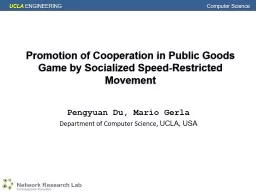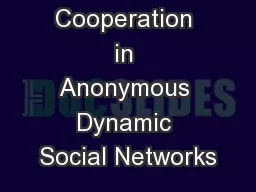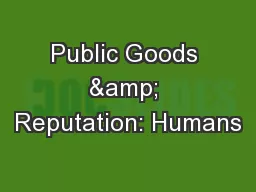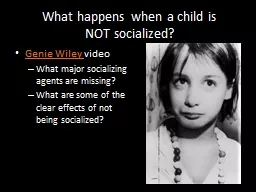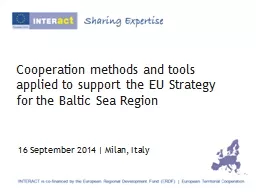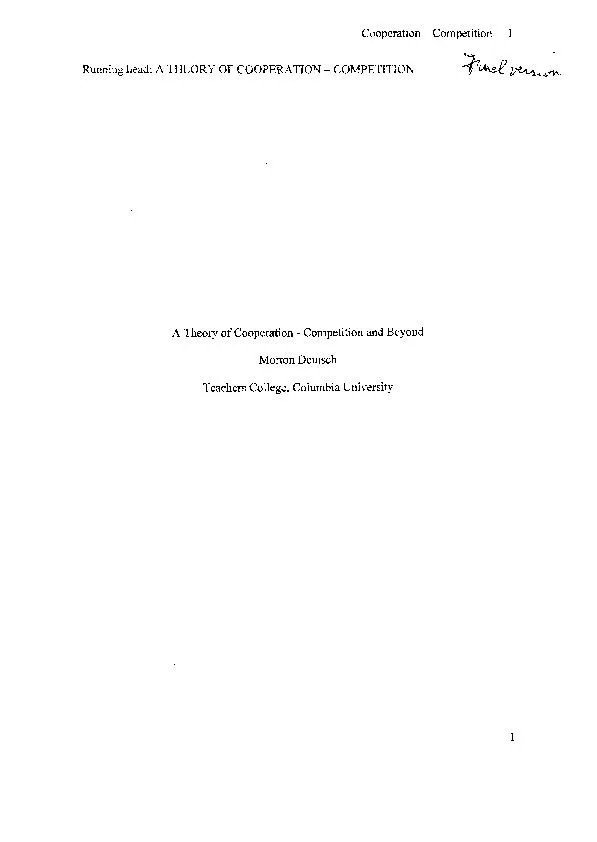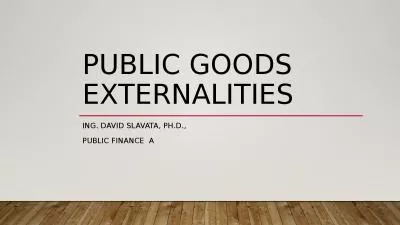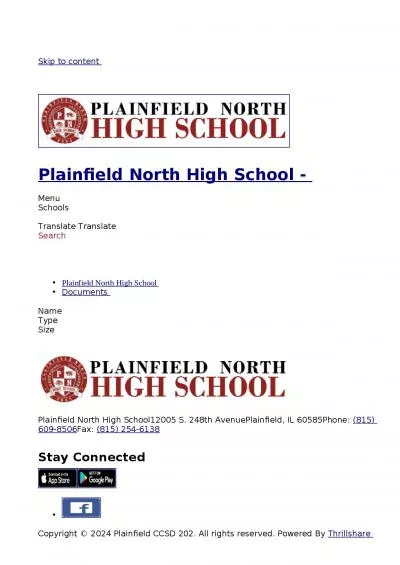PPT-Promotion of Cooperation in Public Goods Game by Socialized
Author : yoshiko-marsland | Published Date : 2017-04-08
Pengyuan Du Mario Gerla Department of Computer Science UCLA USA What is the paper all about Consider commerce in medieval France A citizen lives in a community
Presentation Embed Code
Download Presentation
Download Presentation The PPT/PDF document "Promotion of Cooperation in Public Goods..." is the property of its rightful owner. Permission is granted to download and print the materials on this website for personal, non-commercial use only, and to display it on your personal computer provided you do not modify the materials and that you retain all copyright notices contained in the materials. By downloading content from our website, you accept the terms of this agreement.
Promotion of Cooperation in Public Goods Game by Socialized: Transcript
Download Rules Of Document
"Promotion of Cooperation in Public Goods Game by Socialized"The content belongs to its owner. You may download and print it for personal use, without modification, and keep all copyright notices. By downloading, you agree to these terms.
Related Documents

